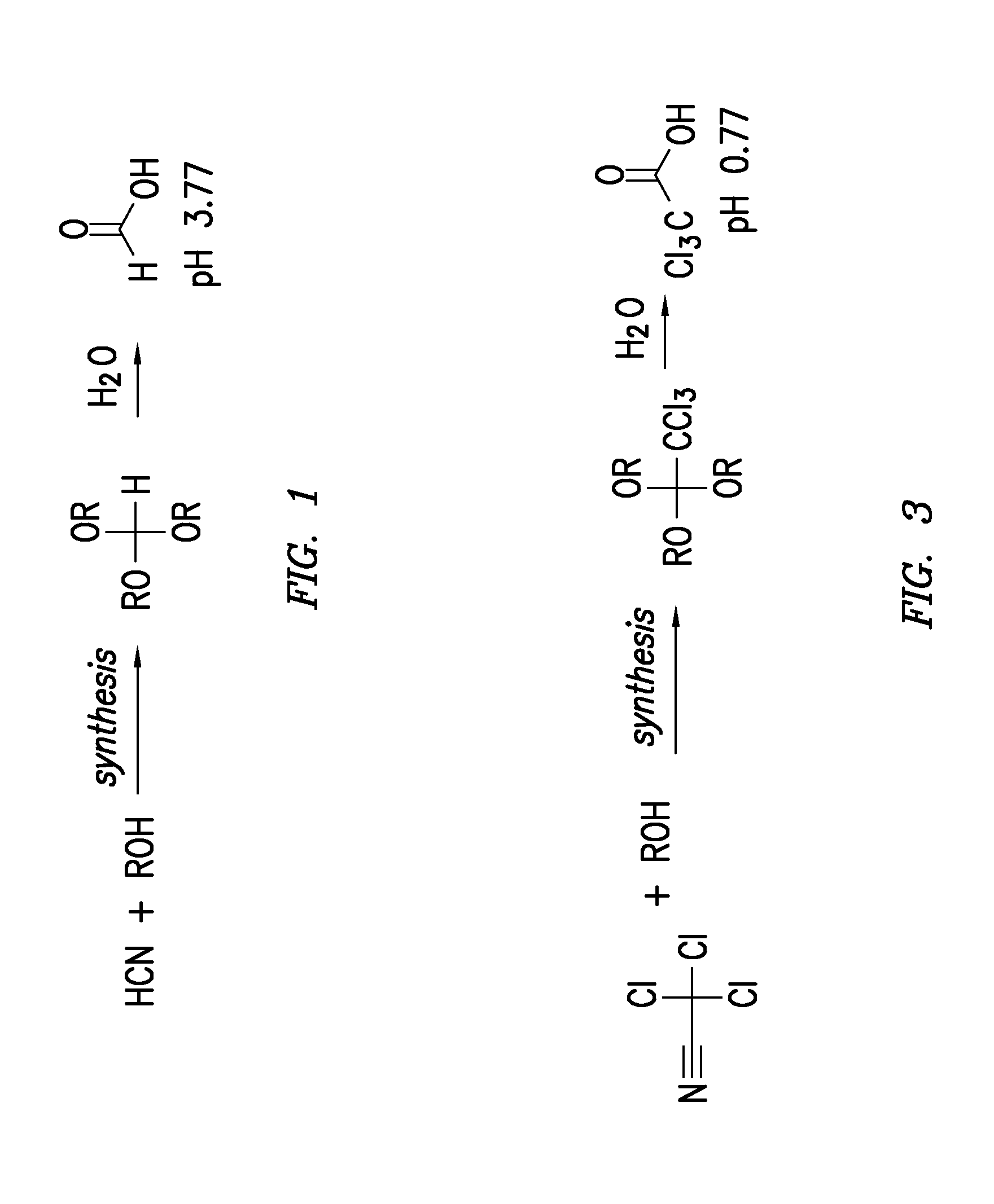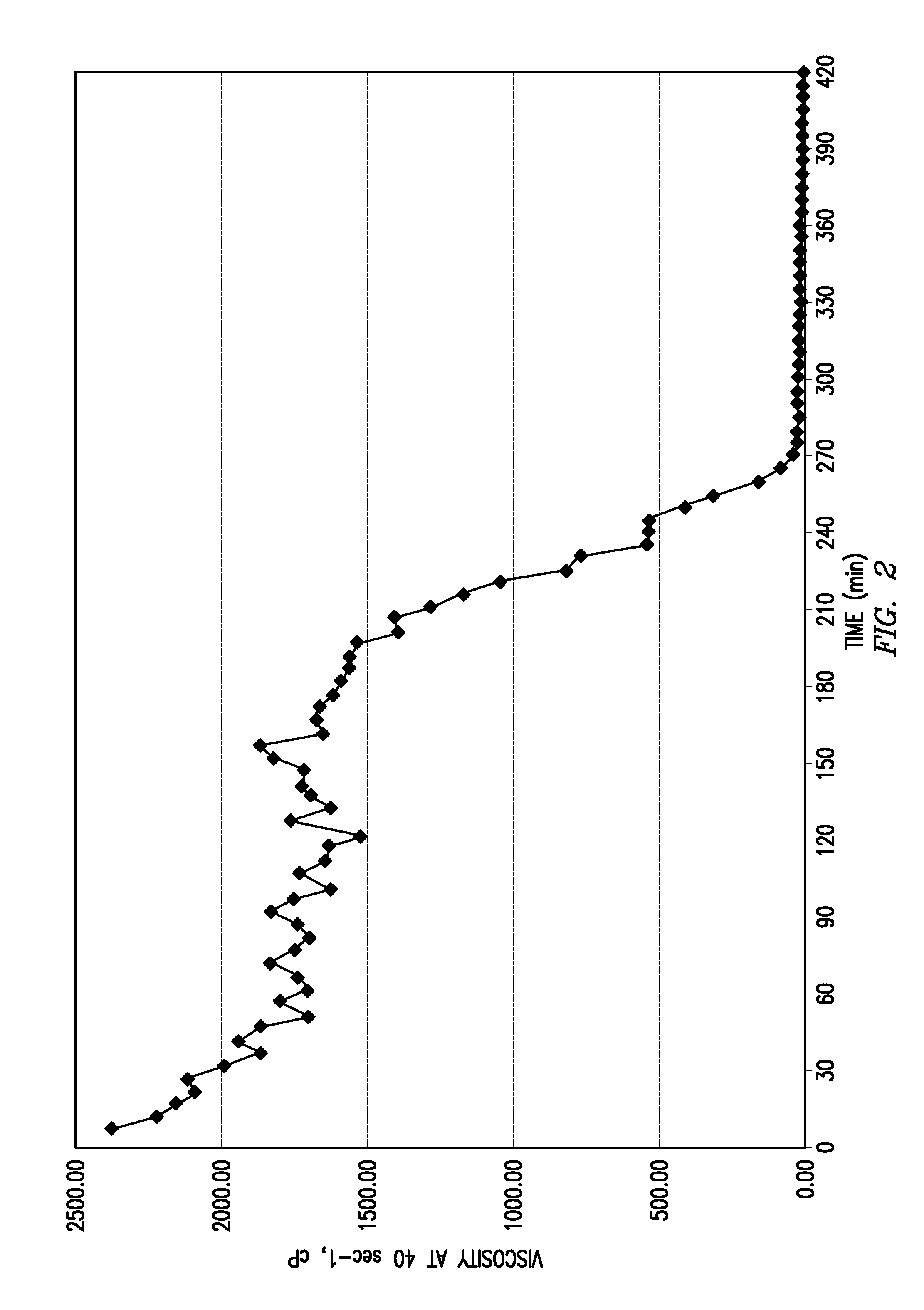Electron-poor orthoester for generating acid in a well fluid
a well fluid and electrolyte technology, applied in the direction of fluid removal, wellbore/well accessories, chemistry apparatus and processes, etc., can solve the problems of acidic fluids corroding tubing, casings, downhole equipment, and acidic fluids tending to corrode tubing, etc., and the cost of repairing or replacing corrosion-damaged equipment is extremely high
- Summary
- Abstract
- Description
- Claims
- Application Information
AI Technical Summary
Benefits of technology
Problems solved by technology
Method used
Image
Examples
Embodiment Construction
Electron-Poor Orthoesters for Use in a Well Fluid or Well Treatment
[0020]The purpose of this invention is to describe a non-oxidizing system that generates an acid in a well fluid. The acid can be used, for example, to reduce the pH of the fluid or as a breaker, activator, de-crosslinker, or acidizer in various types of well fluids. The well fluids can be used in various well services and applications.
[0021]In general, orthoesters (and polyorthoesters) have a structure described by the formula: RC(OR′)(OR″)(OR′″), wherein R can be hydrogen or an organic group, wherein R′, R″, and R′″ can be an organic group but not hydrogen, and wherein R, R′, R″, and R′″ can be the same or different. As used herein, orthoesters include polyorthoesters. Polyorthoesters are a sub-classification of orthoesters. In some polyorthoesters, the groups R, R′, R″, and R′″ do not have to be terminal groups but can be part of the same portion of the molecule, clyclical, cyclizing on itself, or polymeric, e.g.,...
PUM
 Login to View More
Login to View More Abstract
Description
Claims
Application Information
 Login to View More
Login to View More - R&D
- Intellectual Property
- Life Sciences
- Materials
- Tech Scout
- Unparalleled Data Quality
- Higher Quality Content
- 60% Fewer Hallucinations
Browse by: Latest US Patents, China's latest patents, Technical Efficacy Thesaurus, Application Domain, Technology Topic, Popular Technical Reports.
© 2025 PatSnap. All rights reserved.Legal|Privacy policy|Modern Slavery Act Transparency Statement|Sitemap|About US| Contact US: help@patsnap.com



